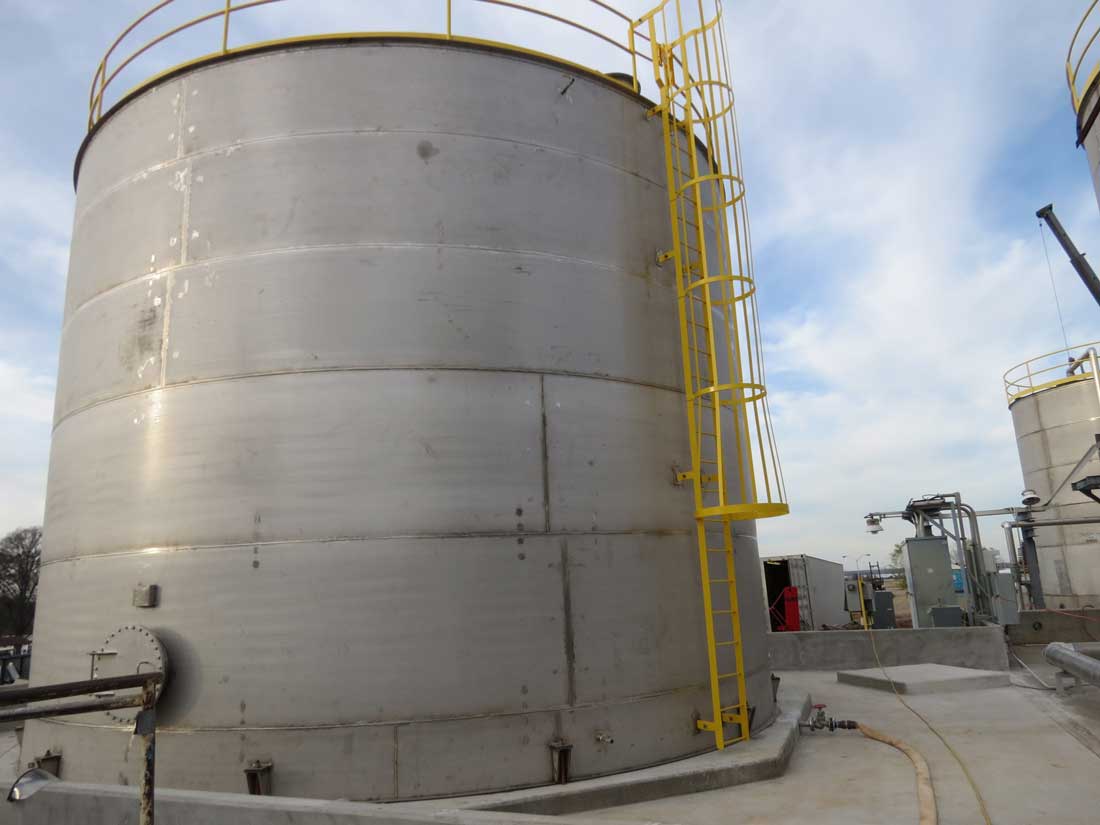Accuracy Matters: Your Overview to Specialist Tank Welding Inspection Services
Accuracy Matters: Your Overview to Specialist Tank Welding Inspection Services
Blog Article
Comprehensive Tank Welding Evaluation for Industrial Security and Regulatory Compliance
Making sure commercial safety and regulatory conformity within the realm of storage tank welding assessments is a crucial aspect of maintaining operational integrity and mitigating potential dangers. The thorough exam of weld high quality, product thickness, and overall tank condition is extremely important in protecting versus ecological threats and architectural failings. By diving right into the intricacies of thorough container welding evaluations, a deeper understanding emerges of the multifaceted techniques employed to maintain sector standards and promote safety procedures.
Relevance of Storage Tank Welding Evaluations
Carrying out regular and thorough container welding inspections is necessary in making sure the structural integrity, safety standards, and regulatory compliance of industrial storage tanks. These evaluations play a critical role in determining any prospective problems or weak points in the welded joints that can compromise the general stability of the storage tank. By finding these issues early, firms can take positive actions to resolve them immediately, therefore protecting against pricey repair work, ecological contamination, or, in the worst-case scenario, tragic failures.
Routine tank welding examinations also help organizations adhere to market laws and criteria stated by authorities such as the American Petroleum Institute (API) or Occupational Safety And Security and Health And Wellness Administration (OSHA) Failing to meet these needs can lead to penalties, legal repercussions, and even the suspension of procedures. Tank Welding Inspection Service. Consequently, buying extensive container welding assessments not only safeguards the well-being of personnel and the surrounding atmosphere however also safeguards the firm's track record and lower line in the long run
Key Parts of Weld Quality Evaluation
Guaranteeing the top quality of welds involves a careful assessment of crucial components that add to the architectural stability and reliability of commercial containers. One critical facet of weld top quality assessment is the exam of weld infiltration. Proper infiltration is essential as not enough penetration can bring about weld issues and jeopardize the toughness of the joint. Furthermore, the weld's profile have to be examined to make certain that it meets the given demands in regards to size and shape. The existence of any interruptions, such as fractures, porosity, or incomplete fusion, should be extensively checked as these can deteriorate the weld and increase the chance of failing. Additionally, the overall weld appearance is also a vital part of top quality analysis, as it can indicate the existence of defects or disparities in the welding process. By comprehensively assessing these crucial parts, assessors can aid guarantee that welded joints satisfy the needed criteria for safety and regulatory conformity in commercial storage tank construction.
Product Thickness Analysis Methods
In the context of weld top quality analysis, an important aspect to take into consideration is the use of product thickness analysis techniques. Precise measurement of material density is important in making sure the structural integrity and safety and security of welded storage tanks. Various non-destructive screening (NDT) approaches are employed for analyzing material density, consisting of ultrasonic testing, radiographic screening, and magnetic bit evaluation. Ultrasonic testing includes the usage of high-frequency acoustic waves to determine product density by gauging the time considered the acoustic waves to take a trip through the product and reflect back. Radiographic testing makes use of X-rays or gamma rays to produce photos revealing worldly thickness. Magnetic particle assessment is reliable for discovering surface and near-surface defects that might impact material thickness. These methods not just aid in examining the density of products yet also help in identifying any possible problems or suspensions that can compromise the weld quality and general integrity of the tank framework. By employing these material density assessment methods, sectors can ensure conformity with safety requirements and laws, thus improving total operational safety and security and dependability.
Tank Condition Examination Methods
An important element in preserving the stability and safety of welded tanks is the thorough assessment of container conditions through trusted inspection techniques. Storage tank condition exam techniques play an important duty in making certain the structural stability and functional effectiveness of commercial tanks. Aesthetic examination is a main approach made use of to assess the outside condition of storage tanks, seeking indications of rust, leakages, or physical damage. Additionally, non-destructive testing strategies such as ultrasonic screening and see page radiographic testing are utilized to discover internal defects, weld defects, and product deterioration that might endanger the tank's efficiency. Tank Welding Inspection Service. Moreover, magnetic bit evaluation can identify surface fractures and flaws that are not visible to the nude eye. These evaluation methods provide beneficial understandings right into the overall health of the storage tank, allowing early discovery of prospective issues and assisting in prompt upkeep or repairs to make certain conformity with security policies and sector criteria. Routine assessments utilizing these techniques are important for stopping disastrous failures and ensuring the long-term reliability of welded storage tanks.
Benefits of Routine Evaluation Practices
Routine inspection methods not only secure versus prospective issues detected throughout tank condition exam methods yet likewise function as aggressive procedures in maintaining the architectural honesty and functional effectiveness of bonded containers. By carrying out normal examinations, industrial facilities can identify any signs of deterioration, cracks, leakages, More Help or other flaws in the storage tank welds promptly. This very early discovery enables prompt repair services or check here maintenance treatments, avoiding little issues from rising into bigger, more pricey problems that could endanger safety or bring about governing non-compliance.

Conclusion

In verdict, comprehensive container welding evaluations are vital for making sure commercial security and regulatory compliance. By carrying out regular inspections and assessments of weld quality, material density, and storage tank condition, organizations can recognize possible risks and avoid pricey crashes. Implementing a proactive method to evaluation methods can help maintain the structural stability of storage tanks, shield the atmosphere, and ensure the safety of employees and the bordering area.

Report this page